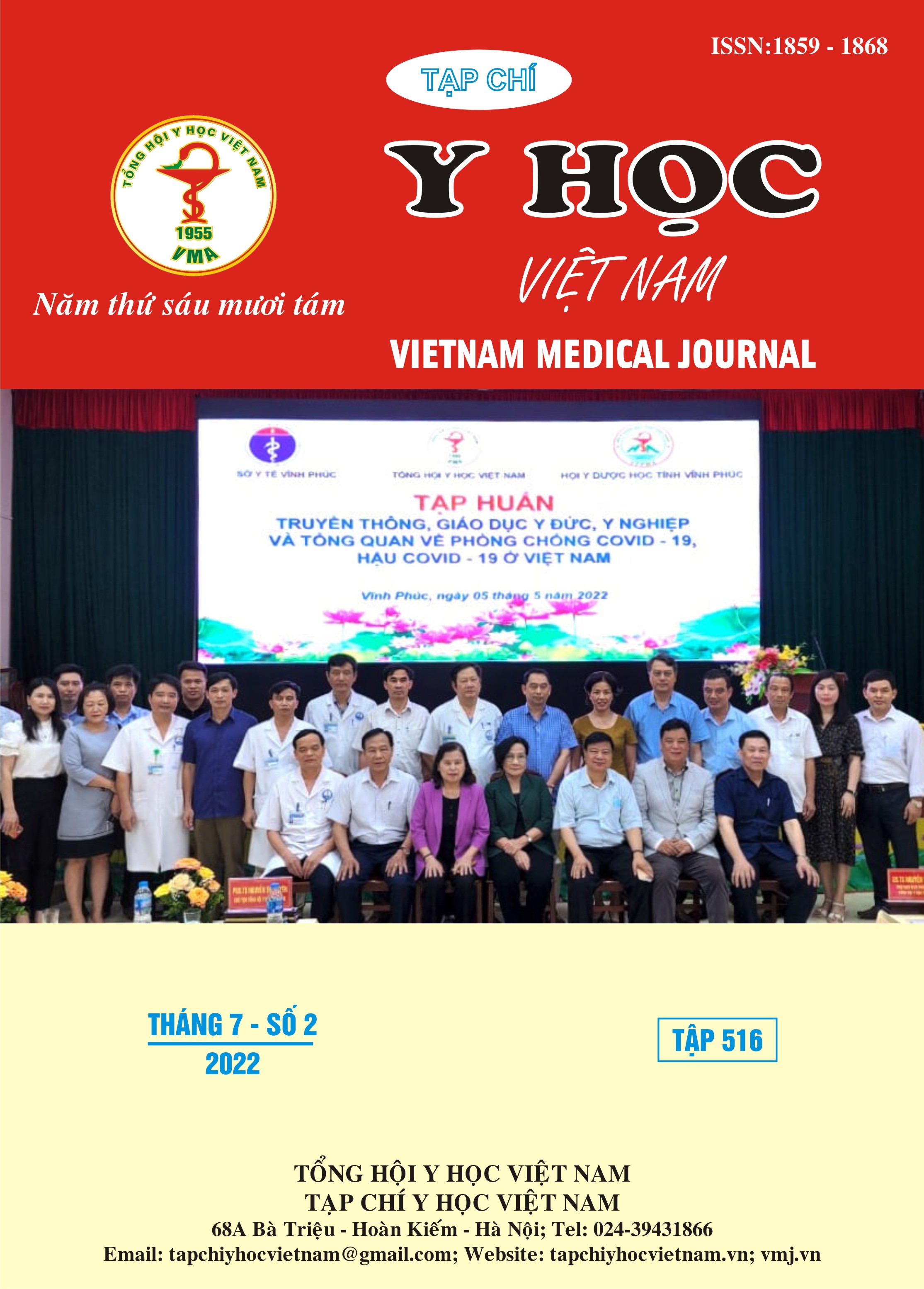SAFETY AND EFFICACY OF TRANSCATHETER CLOSURE OF ATRIAL SEPTAL DEFECT FOR PATIENTS WITH DEFICIENT AORTIC RIM UNDER INTRACARDIAC ECHOCARDIOGRAPHIC GUIDANCE
Main Article Content
Abstract
Background: Although transcatheter closure of atrial septal defect is safe and effective for patients with sufficient rim, atrial septal defect patients with deficient aortic rim have higher risks of device embolization and cardiac erosion. Now, with the development of intracardiac echocardiography, it helps to avoid such serious complications during the procedure. However, efficacy and safety remain unclear. Objective: Evaluating the safety and efficacy of transcatheter closure of atrial septal defect for patients with deficient aortic rim under intracardiac echocardiographic guidance. Subjectives and method: 37 patients with atrial septal defect with deficient aortic were treated at the cardiovascular centre, Cho Ray Hospital. The prospective, open label, non-randomized, longitudinal study. Result: 37 patients had mean age of 41.27 ± 11.34 years old (23 – 62 years), female 81.08%. The mean diameters of the atrial septal defect were 23.51 ± 4.64 mm (transesophageal echocardiography) and 27.45 ± 4.81 mm (intra-chamber echocardiography) with P<0.001. The mean diameter of the device is 29.81 ± 4.92 mm (18 – 39 mm). All patients were evaluated after the procedure, 1 month and 6 months, recording 100% of the cases technically successful. We followed up in-hospital patients and recorded 01 case of atrial fibrillation (1.82%) who were successfully converted and maintained sinus rhythm during follow-up; In addition, no other adverse events were recorded at 3 months. After a 3-month follow-up period, we recorded patients with improved dyspnea according to NYHA class as well as the right ventricular diameter and pulmonary artery pressure on echocardiography. Conclusion: Transcatheter closure of atrial septal defect for patients with deficient aortic rim under intracardiac echocardiographic guidance is probably safe and effective
Article Details
Keywords
atrial septal defect, deficient aortic rim, intracardiac echocardiography
References
2. Butera G, Romagnoli E, Carminati M, Chessa M, Piazza L, Negura D, et al. Treatment of isolated secundum atrial septal defects: Impact of age and defect morphology in 1,013 consecutive patients. Am Heart J. 2008 Oct;156(4):706-12.
3. Kitano M, Fujimoto K, Kato A, Kurosaki K, and Shiraishi I. Efficacy and safety of the atrial septal defect closure for patients with absent or malaligned aortic rim using a Figulla Flex II device flared and straddling behind the aorta. Congenital Heart Disease. 2021 jan 7;16(3):269-283.
4. Levi DS, Moore JW. Embolization and retrieval of the Amplatzer septal occluder. Catheter Cardiovasc Interv. 2004 Apr;61(4):543-7.
5. Meyer MR, Kurz DJ, Bernheim AM, Kretschmar O, and Eberli FR. Efficacy and safety of transcatheter closure in adults with large or small atrial septal defects. Springerplus. 2016; 5(1): 1841.
6. O'Byrne ML, Gillespie MJ, Kennedy KF, Dori Y, Rome JJ, Glatz AC. The influence of deficient retro-aortic rim on technical success and early adverse events following device closure of secundum atrial septal defects: An Analysis of the IMPACT Registry. Catheter Cardiovasc Interv. 2017 Jan; 89(1):102-111.
7. O’Byrne ML, Glatz AC, Sunderji S, Mathew AE, Goldberg DJ, Dori Y, et al. Prevalence of Deficient RetroAortic Rim and Its Effects on Outcomes in Device Closure of Atrial Septal Defects. Pediatr Cardiol. 2014 Oct;35(7):1181-90.
8. Wahab HA, Almossawy A, Al Bitar I, Hijazi ZM. Tips and tricks to prevent prolapse of the Amplatzer septal occluder through large atrial septal defects. Catheter Cardiovasc Interv. 2011 Dec 1;78(7):1041-4.


